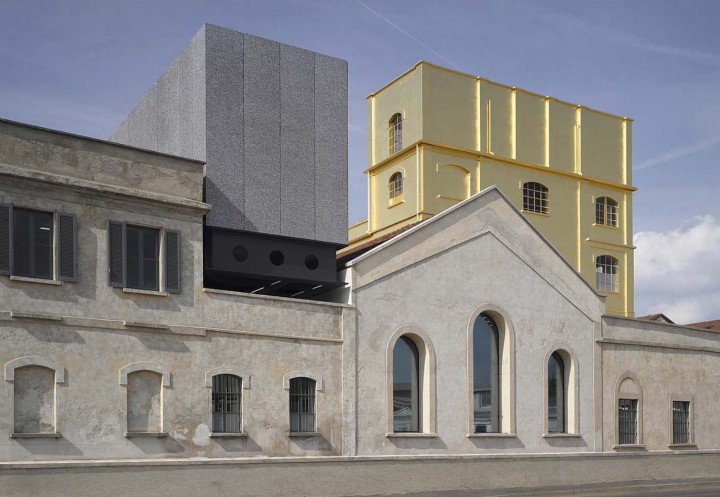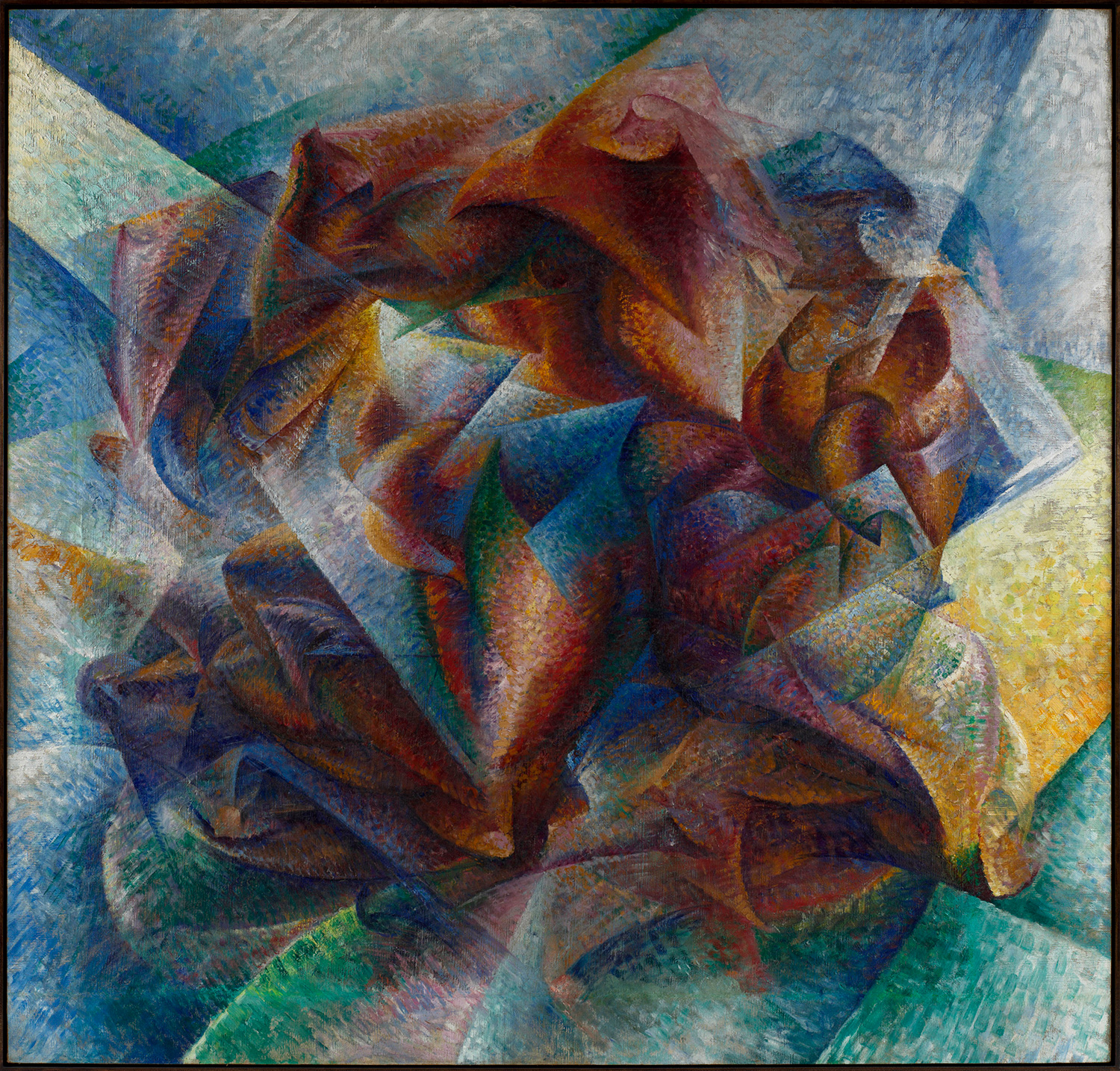“The 1990s were Barcelona’s decade, the 2000s Berlin’s. This decade is Milan’s.” With these words Dario Franceschini, Minister of Culture, ended his brief speech honoring the inauguration of the Prada Foundation’s new venue. If said in a different context, that statement would have sounded jingoistic and cocky. But here, in the Cinema — one of three new buildings that, along with the other seven, make up the Foundation’s complex in a hundred-year-old distillery converted by the architectural firm OMA — the Minister’s words go beyond political parley. They state a fact: today Milan can pride itself for having a center of art production whose high-quality program will reaffirm the city’s centrality in the global cultural landscape.
Located in the city’s south, in Largo Isarco, bordering the wasteland of the Porta Romana rail yard, the Foundation’s new venue is another revitalization of one of the many defunct industrial complexes that constellate Milan’s suburbs. But, distinct from places that share a similar history, from the Politecnico di Milano’s Bovisa Campus to the Pirelli plants at the Bicocca, the “factory” is here translated into a social environment that doesn’t pursue a productivist program, but rather an idea of collectivity. Porous and interactive, these spaces result in a genuine efficiency that approaches museography with variety but without indulging in forced experimentation. They disclose a peculiar Milanese identity — recalling the hieratic scenarios typical of Milanese writer Giovanni Testori — manifesting themselves as spaces of the city and for the city.
Implicit in the Foundation’s program is the will to redefine the role of private action within the public social body, beyond rules specific to patronage, philanthropy and partnership. Almost twenty years ago, the Foundation produced Dan Flavin’s permanent installation in the church of Santa Maria Annunciata in Chiesa Rossa, an intervention that stimulated another way of experiencing religious feeling in the intimacy of the self and even more evidently within the community. Similarly, the exhibitions hosted in the new venue seem to combine the spectacular nature of exhibition making with an experience of art conceived of as a shared and sharable value.
Assembled with scholarly erudition as well as irony and audaciousness, and publicly displayed for the first time at Ca’ Corner della Regina in 2011, the Prada Collection is presented here in three iterations: the exhibitions “An Introduction,” “In Part” and “Trittico.” The exhibitions sharply interpret the dialectics between the eclectic afflatus that naturally distinguishes private collections and the cultural institution’s mandate to tell stories and explore thematics. In “Trittico,” for example, Pino Pascali’s 1 metro cubo di terra [1 square meter of soil] (1967) is exhibited along with works by Eva Hesse (Case II, 1968) and Damien Hirst (Lost Love, 2000) on the basis of their similar cubic volume. The dialog between the three works stimulates an almost eschatological reading of the Minimalist tradition. The Collection thus becomes an exploratory tool for engaging with a multiplicity of artistic discourses — a goal that is shared by the Foundation’s educational programs, film screenings, and even a place as explicitly and exclusively recreational as Bar Luce. (The cafe was designed by Wes Anderson, who drew inspiration from Milan’s urban atmosphere as depicted in Neorealist films.)
Among the inaugural exhibitions, “Serial Classic” (and its “twin” hosted in Venice, “Portable Classic”) is perhaps the project that most eloquently translates the Foundation’s ethos. Curated by archeologist Salvatore Settis, the exhibition celebrates the “choral” nature of Greek art and the figure of the classical artist as a vector of social values that are to be pursued above any manifestation of individual creativity. The exhibition subtends a genuinely democratic vision of art — a notion reified by the dynamics of serial production, copy and reproduction that constitute the real fulcrum of Settis’s discourse. (These dynamics recall the premise of another exhibition promoted by the Foundation, “The Small Utopia. Ars multiplicata,” hosted at Ca’ Corner in 2012, which explored the democratic dissemination of art thanks to the invention of the edition.) Roman copies of Myron’s Discobolus or Polykleitos’s Doryphoros are displayed next to one another, provoking in the viewer a visual experience similar to virtual reality. These copies suggest the dramatic absence of the original, but at the same time acknowledge that the experience of art historically had a pedagogic and popularizing intent, nourished by its dissemination to the many.



